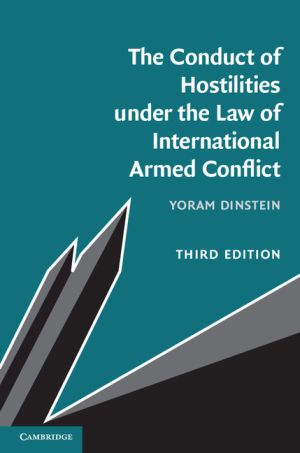
Written by the leading commentator on the subject, this is the seminal textbook on the law of international armed conflict.
Focusing on recent issues arising in the course of hostilities between States, it explores the dividing line between lawful and unlawful combatants, the meaning of war crimes and command responsibility, the range of prohibited weapons, the distinction between combatants and civilians, the parameters of targeting and proportionality, the loss of protection from attack (including 'direct participation in hostilities') and special protection (granted, pre-eminently, to the environment and to cultural property).
In a completely revised and updated text, the author expertly covers the key principles and includes important new issues, including the use of autonomous weapons and the complexities of urban warfare.
The subtleties and nuances of the international law of armed conflict are made accessible to the student and practitioner alike, whilst retaining the academic rigour of previous editions.